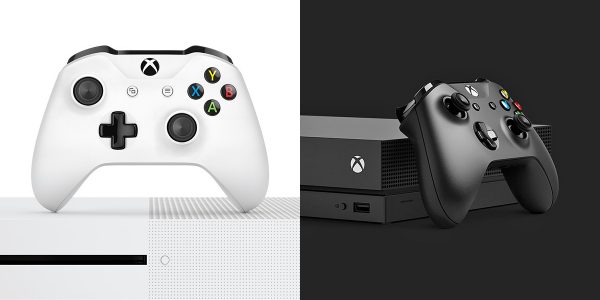
If 2017 has taught us anything, it’s that you should never underestimate the appeal of a new console.
Earlier this year, we were shocked to learn that the Nintendo Switch was rapidly becoming a sales success despite its lower power level, lack of games – at the time of launch -, and the failure of Nintendo’s previous system, the Wii U. The Switch is on track to exceed the sales figures of all but the most popular of Nintendo consoles within the next few years.
More recently, analysts were shocked to learn that Microsoft’s Xbox One X is selling incredibly well. Their shock stems from the fact that Microsoft’s more powerful Xbox One suffered from a high price point, a slow year for Xbox exclusives, and the general fact that the console was designed for a smaller, more hardcore audience.
Despite all of that, reports suggest that the Xbox One X is on pace to outsell Sony’s cheaper 4K console upgrade alternative, the PlayStation 4 Pro. That seeming change from the console’s predicted fortunes has prompted people to start asking why it is that the Xbox One X is exceeding sales expectations. Some suggest it’s simply the holiday rush. Others point to a video game industry that is healthier than some people thought.
As for us, we’re starting to think that people just like the idea of owning an objectively superior technological product.
Granted, that idea is the basis of the entire technology industry. You make a product people love, and then you make it better. What Microsoft did with the Xbox One X, however, is closer to what Apple is doing with the iPhone 8 and iPhone X. They released a device that they say is perfectly fine and then they released a device that is just bigger and better across every conceivable metric.
You’d think that consumers would rally against companies that dare to create such an illusion of choice. What’s saved both companies in this instance is that both the products in question really are fine, but there’s just one that is better. It creates the illusion of being able to buy into the future right now.
It’s enough to make you wonder whether the future of console gaming involves high-end and low-end versions of the same console.
There are two ways that could work. The first is similar to what we’re currently seeing. Sony and Microsoft (possibly even Nintendo) release a console better than the previous consoles, then they release a console better than that one a few years later. Again, we’ve seen Apple do this for years. We’ve also seen it from some console manufacturers, but the upgrades in question tend to not be as dramatic as the ones we’ve seen in the PlayStation 4 Pro and Xbox One X.
The other, slightly more frightening, possibility is that Sony and Microsoft could release a low-end and high-end console at the same time. The idea there would be to drive up the number of users that are interested in a high-end console by showing more casual users exactly how much better it is than similar technology.
At this point, one of those two release models seems to be inevitable. After all, people are proving they love buying new consoles and they love buying “better” consoles. Whether or not we’ll reach a point when the base console – the lesser console – is one that’s really worth owning at all is a worry that we hope won’t ever have to be addressed.











![Wicked: For Good Is Up For Pre-order On Disc & Digital Including Collector’s & SteelBook Editions [Updated] Wicked for Good digital poster](https://hd-report.com/wp-content/uploads/2025/11/wicked-for-good-digital-poster-324x160.webp)
